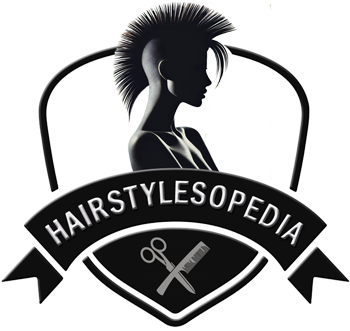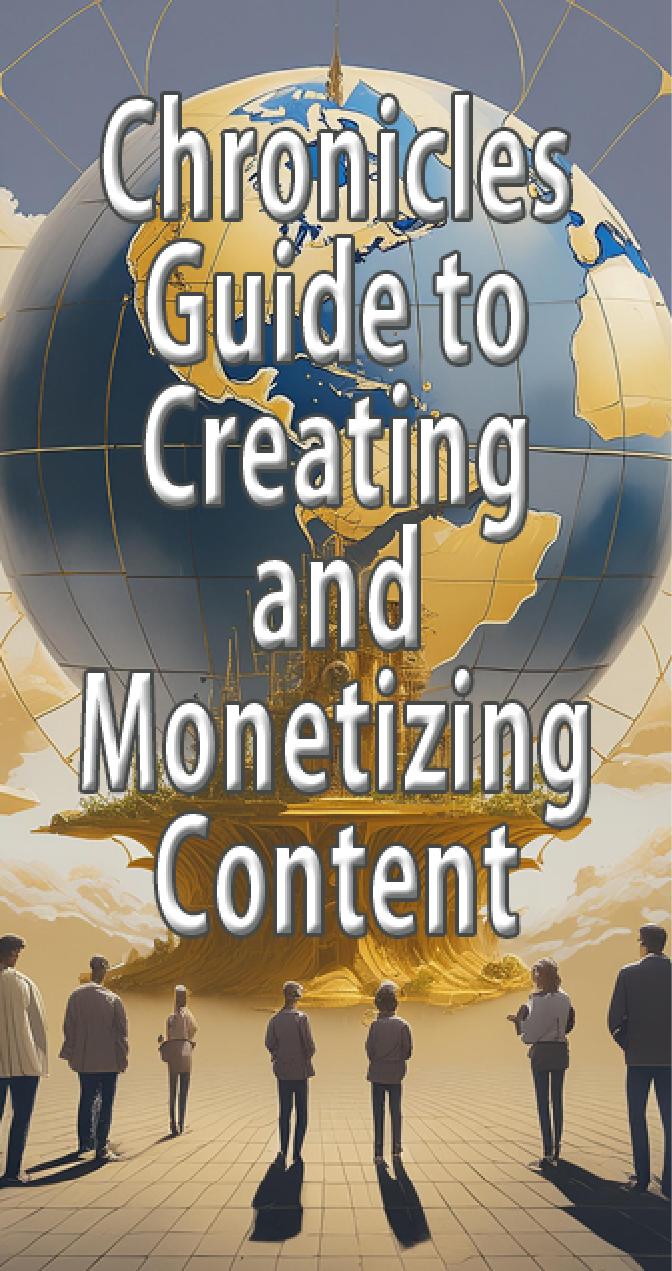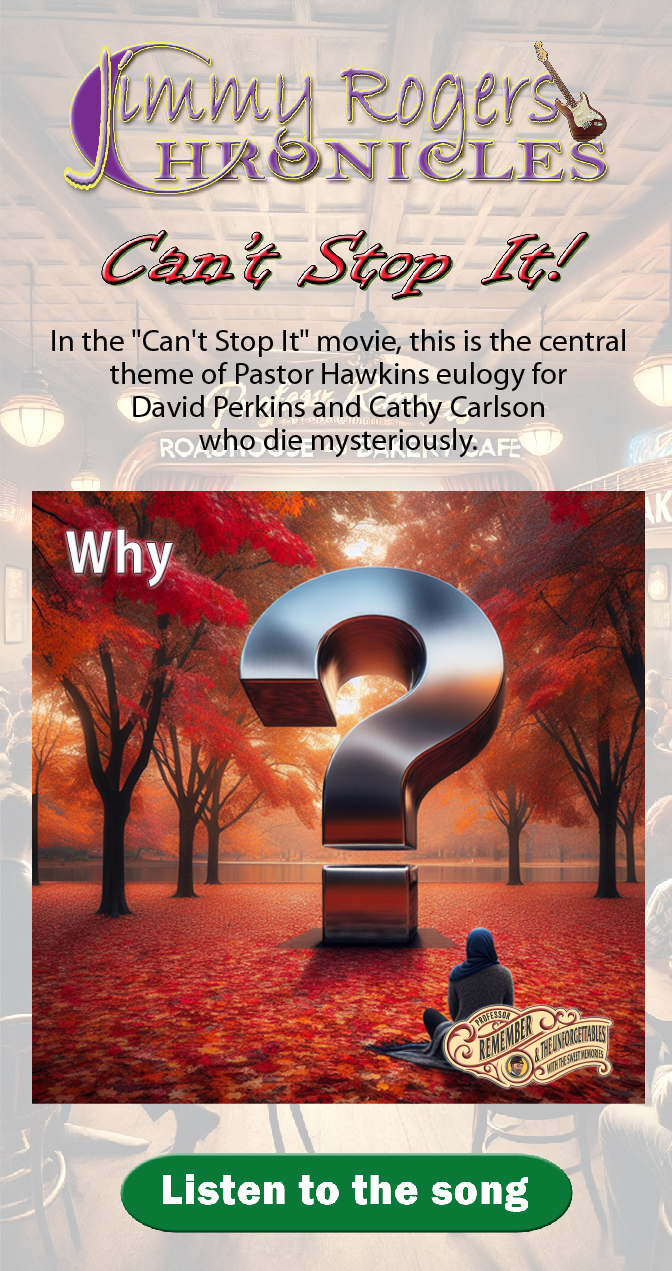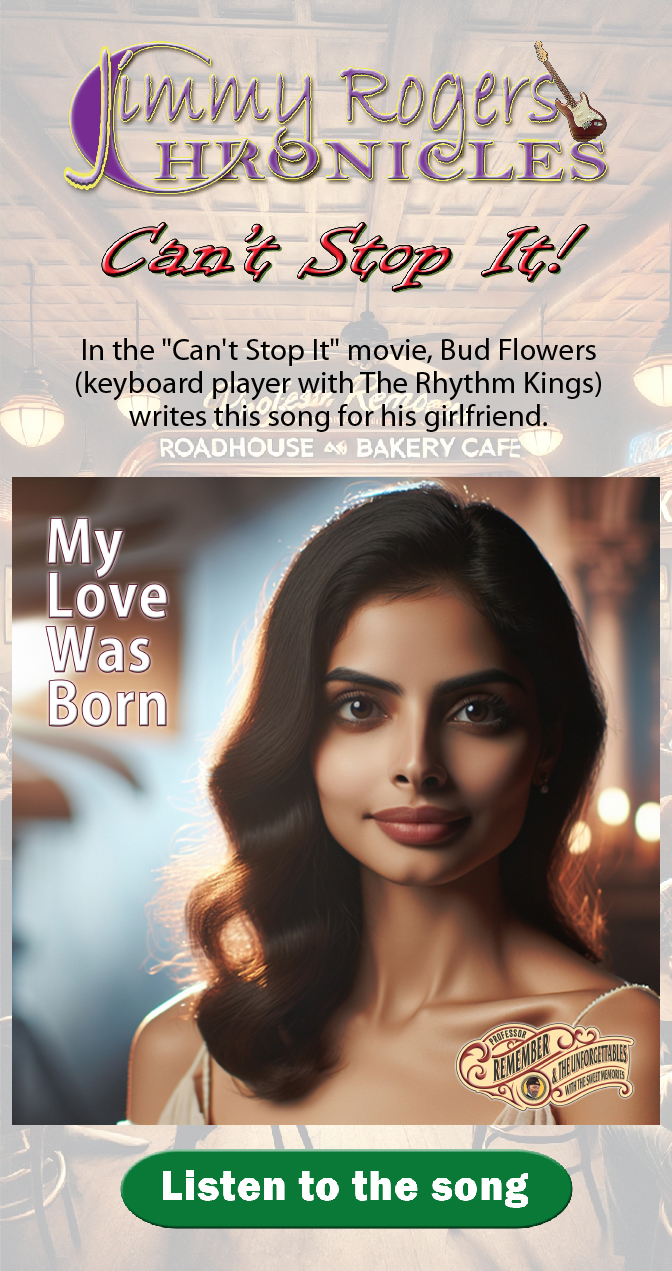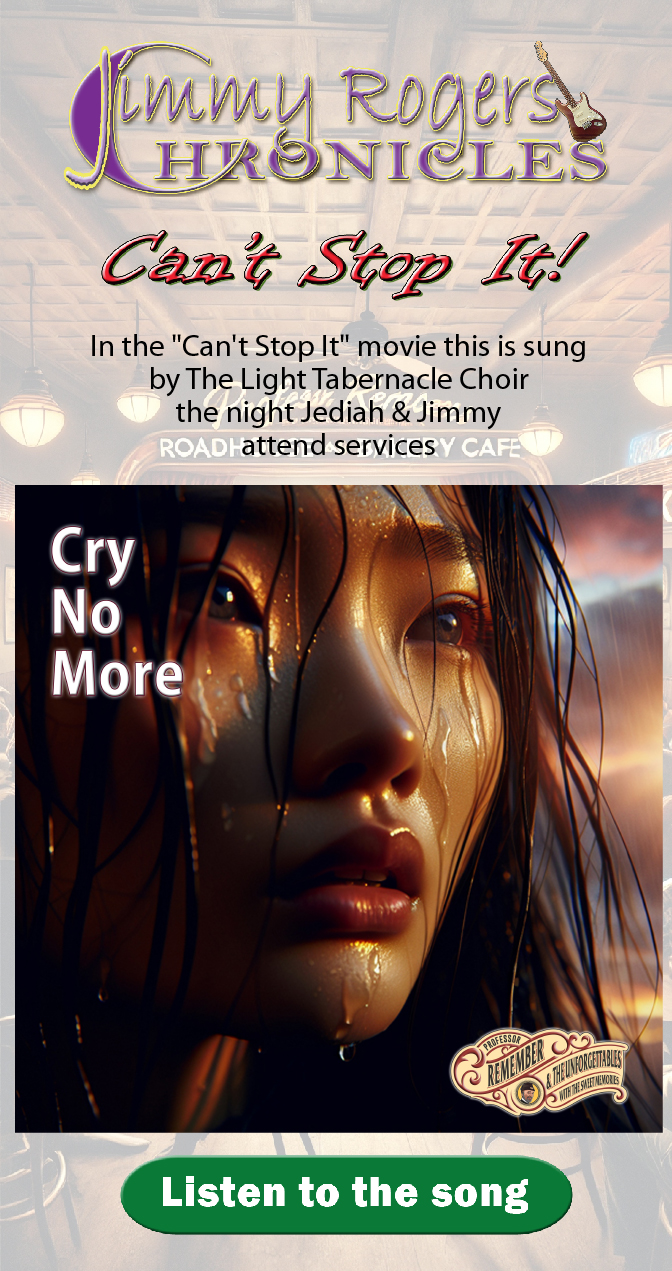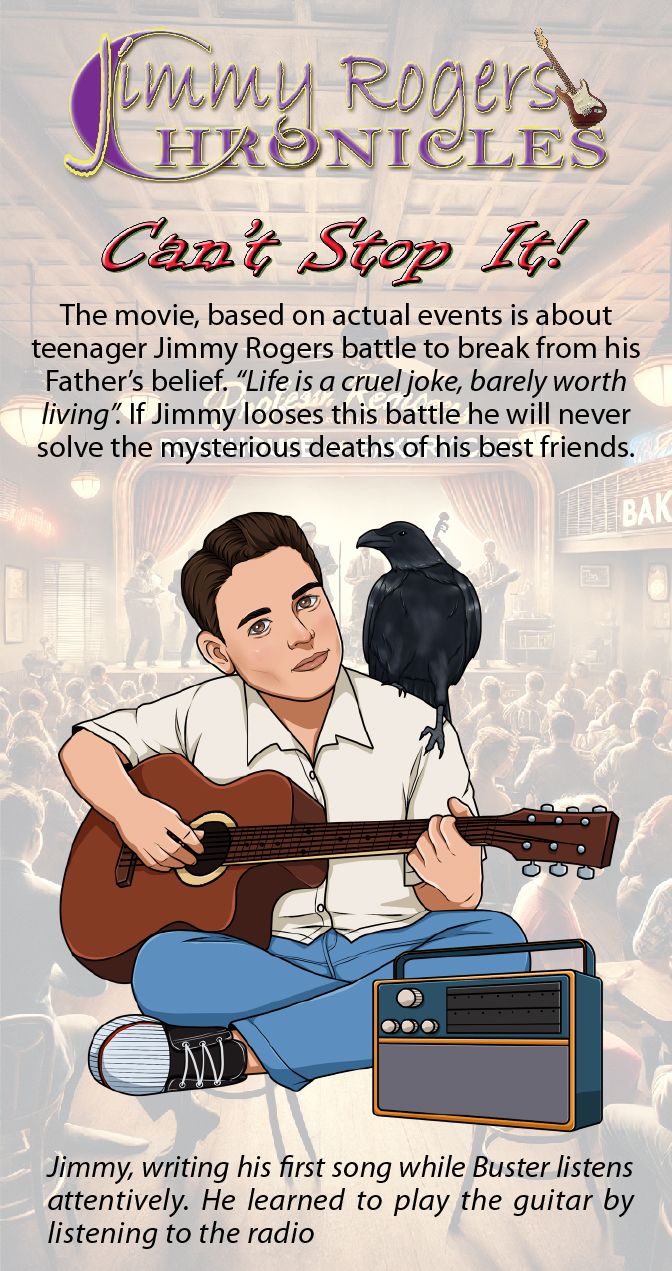popular hair styles
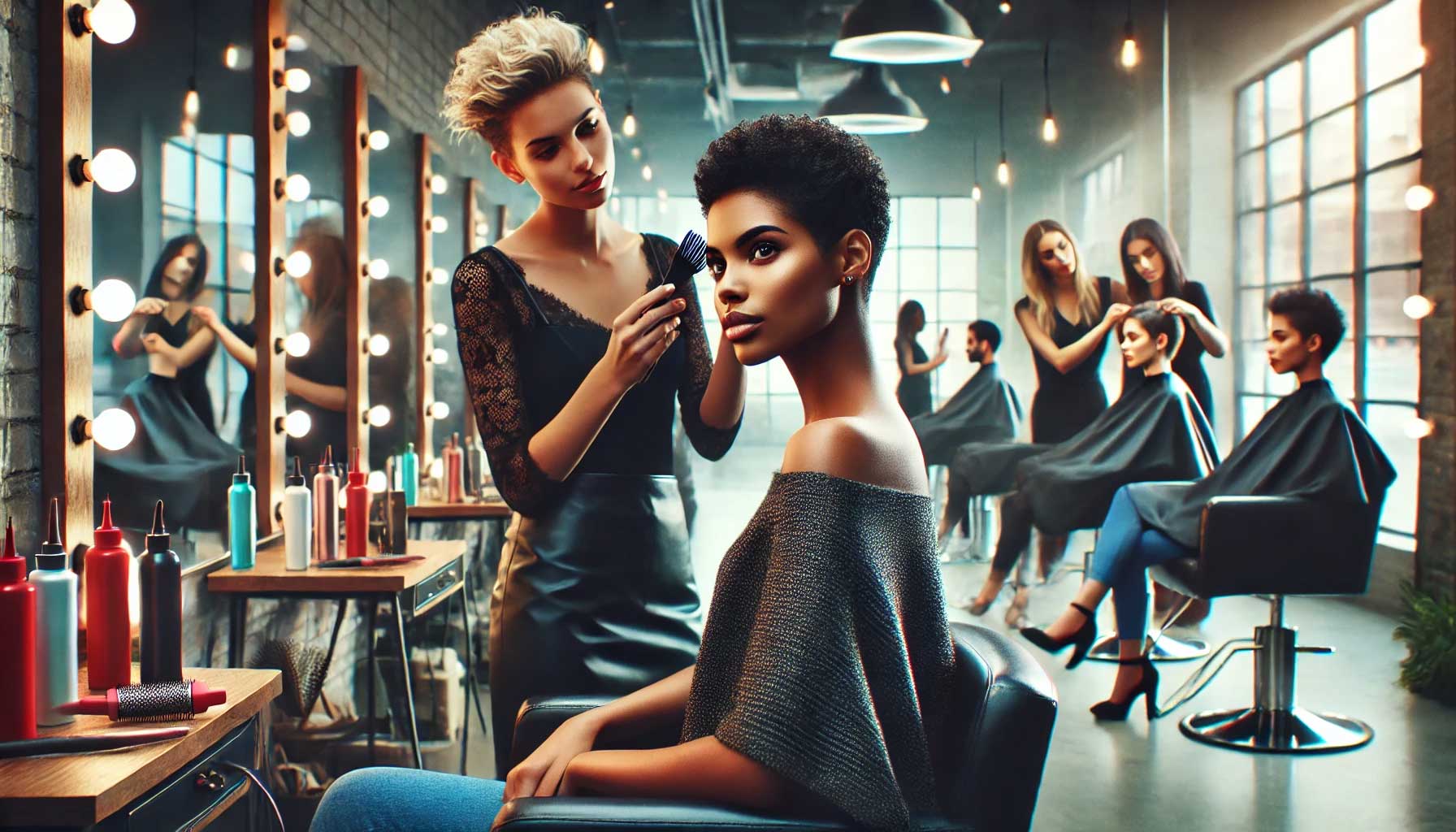
The world of hairstyles is vast and diverse, encompassing a rich history of cultural, aesthetic, and personal expression. Whether you’re seeking a look that reflects sophistication, boldness, casual ease, or creative flair, each hairstyle tells a unique story. From classic styles like the Chignon Bun and the Pompadour, which have graced royalty and rock stars alike, to contemporary, cutting-edge trends like Peekaboo Highlights and the Drop Fade, every style offers something distinct, shaped by origins, cultural significance, and the people who popularized them. Whether it’s the geometric precision of the Flat Top, made iconic in the 80s by Will Smith, or the effortless cool of Loose Waves, seen on modern style icons like Chris Hemsworth, hairstyles are deeply intertwined with personal identity and expression.
Each style not only reflects a particular aesthetic but also works harmoniously with different hair textures, lengths, and face shapes. For instance, the Afro Puff, worn proudly by cultural icons like Diana Ross, celebrates natural curls and coils, while the sleek Shadow Fade, often sported by Usher, offers a sharp and modern look that complements all hair textures. Women’s hairstyles such as the Goddess Braids, rooted in African traditions and popularized by stars like Gabrielle Union, emphasize strength and elegance, while shorter, bolder looks like the Pixie Afro, as worn by Lupita Nyong’o, celebrate natural beauty and simplicity with a chic twist.
Men’s hairstyles have evolved significantly, with more contemporary styles like the Faux Hawk (as seen on Zac Efron) and Tapered Afro (a signature look of Donald Glover) blending creativity with tradition. In parallel, the rise of the Medium-Length Men’s Haircut, often seen on actors like Jared Leto, illustrates how men’s grooming has embraced versatility, allowing them to express both casual and refined vibes with ease. Styles like the Flat Twists and Cornrows continue to pay homage to African heritage while evolving with modern flair through accessorizing with beads and cuffs, as seen on Alicia Keys.
Each of the styles described in this collection showcases a unique combination of length, shape, texture, and structure. Whether layered for movement, accessorized for added elegance, or styled for effortless everyday wear, these hairstyles can fit a variety of occasions—from formal gatherings to relaxed, casual days. With detailed descriptions covering the origin, parting, fringe, accessories, color, and even face-framing effects, you can now find the perfect hairstyle to suit your face shape, personal taste, or occasion—while drawing inspiration from the stars who’ve made these looks timeless.
Afro Puff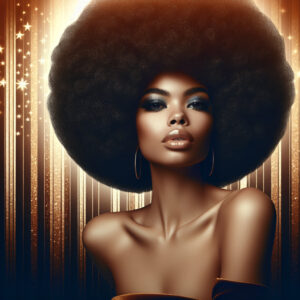
Origin: Originated from the Black Power movement of the 1960s and 70s, emphasizing natural hair.
Length: Short to medium-length hair, depending on how the puff is styled.
Shape and Structure: Round, voluminous puff, usually high on the crown or positioned low near the nape.
Texture: Naturally coily or curly texture.
Layers: Often layered to increase volume and shape, though not always necessary.
Parting: Often no part; hair is usually pulled back into a puff.
Fringe/Bangs: Not common with this style, but face-framing curls can be left out.
Accessories: Headbands, scarves, decorative clips, or hairpins.
Color: Typically natural, but can be dyed for a bold effect.
Occasion/Vibe: Casual, empowering, often worn for social events or celebrations of natural hair.
Face Framing: Hair is pulled away from the face, creating an open and framed look.
Famous Celebrity: Diana Ross.
Loose Waves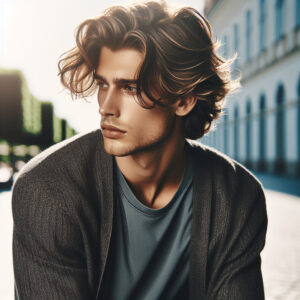
Origin: Popularized in the 20th century as a relaxed, beachy hairstyle.
Length: Medium to long.
Shape and Structure: Flowing, relaxed waves with a casual appearance.
Texture: Soft, tousled waves.
Layers: Subtle layers to add movement and volume.
Parting: Middle or side part, depending on the desired look.
Fringe/Bangs: Usually no fringe, but longer front sections may fall naturally.
Accessories: Minimal, but hats or bandanas can be added for a casual look.
Color: Natural colors, often with sun-kissed highlights.
Occasion/Vibe: Casual, beachy, and laid-back, great for everyday wear or informal events.
Face Framing: Loose waves soften and frame the face without harsh lines.
Famous Celebrity: Chris Hemsworth.
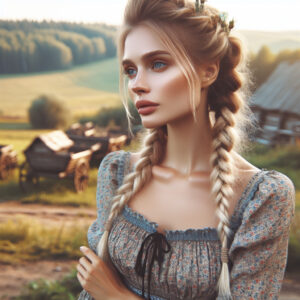
Goddess Braids
Origin: Rooted in African culture, traditionally symbolizing strength and beauty.
Length: Long, often extending past the shoulders.
Shape and Structure: Thick braids, sometimes styled into intricate patterns or updos.
Texture: Smooth and sleek braids.
Layers: Typically none, but layered extensions can be added for more dimension.
Parting: Often in creative patterns, like zigzags or straight parts.
Fringe/Bangs: None; hair is fully braided away from the face.
Accessories: Gold or silver cuffs, beads, or decorative pins.
Color: Often natural, but can be enhanced with colored extensions.
Occasion/Vibe: Regal, formal, or special occasions; perfect for cultural celebrations.
Face Framing: Braids are pulled back, highlighting the cheekbones and jawline.
Famous Celebrity: Gabrielle Union.
Flat Top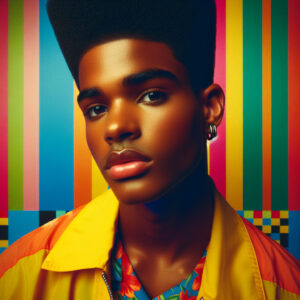
Origin: Popularized in the 1980s, especially within hip-hop culture and African-American communities.
Length: Short to medium.
Shape and Structure: Flat, horizontal top with shorter sides.
Texture: Thick, often coarse hair that holds shape easily.
Layers: Usually no layers, but height varies.
Parting: Rarely parted, as the style emphasizes the flat top.
Fringe/Bangs: None.
Accessories: Often worn without accessories, though some may add lines or designs.
Color: Typically natural, though modern variations may involve highlights.
Occasion/Vibe: Bold, retro, and statement-making; ideal for casual wear or cultural expression.
Face Framing: The flat top creates a structured, geometric silhouette that emphasizes the forehead and cheekbones.
Famous Celebrity: Will Smith (in Fresh Prince of Bel-Air).
Cornrows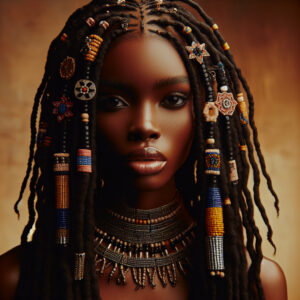
Origin: A traditional African hairstyle that dates back thousands of years.
Length: Can be short to long, depending on the design.
Shape and Structure: Tight braids, often aligned close to the scalp in straight or geometric patterns.
Texture: Smooth, sleek braids.
Layers: None; the style focuses on braiding the hair uniformly.
Parting: Styled with intricate parting patterns for visual effect.
Fringe/Bangs: Not typical, though baby hairs may be styled along the hairline.
Accessories: Beads, cuffs, or colorful strings woven into the braids.
Color: Typically natural, though colored extensions can be added for flair.
Occasion/Vibe: Versatile, worn casually or for special events, symbolizing cultural pride.
Face Framing: Pulls hair tightly away from the face, accentuating facial features.
Famous Celebrity: Alicia Keys.
Medium Length Messy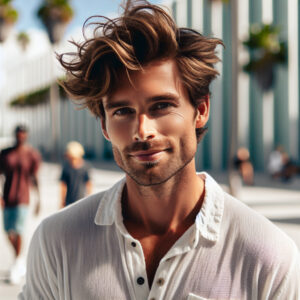
Origin: A modern classic, gaining popularity in the 20th century as men embraced longer hair.
Length: Falls between the ears and shoulders.
Shape and Structure: Loose and natural, often with a slight wave.
Texture: Can be straight, wavy, or curly, depending on hair type.
Layers: Subtle layers to add movement and volume.
Parting: Middle or side part, depending on personal preference.
Fringe/Bangs: Can include a slight fringe or long bangs swept back.
Accessories: Minimal, though bandanas or hats can add flair.
Color: Natural or sun-kissed highlights for a casual look.
Occasion/Vibe: Versatile and casual; works well for everyday wear or slightly formal occasions.
Face Framing: Softens the face and adds structure with length.
Famous Celebrity: Jared Leto.
Layered Bob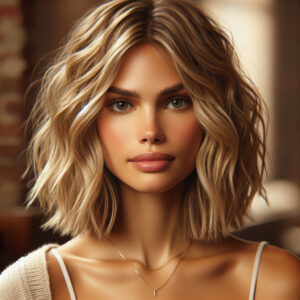
Origin: Became popular in the 1920s as a symbol of women’s liberation and modernity.
Length: Typically chin to shoulder-length.
Shape and Structure: Structured with multiple layers for movement and volume.
Texture: Works well with both straight and wavy textures.
Layers: Multiple layers add depth and dimension.
Parting: Often a middle or side part to enhance the layering.
Fringe/Bangs: Can be paired with curtain bangs or side-swept bangs.
Accessories: Minimal, though headbands or barrettes can be added for style.
Color: Usually natural, though highlights add a modern touch.
Occasion/Vibe: Sophisticated and versatile; ideal for both casual and professional settings.
Face Framing: Layers help soften and frame the face.
Famous Celebrity: Jennifer Aniston.
Short Afro 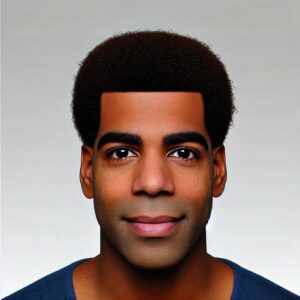
Origin: Symbol of pride during the civil rights movement, especially in the African-American community.
Length: Short, usually close to the scalp.
Shape and Structure: Rounded and natural, following the natural curl pattern.
Texture: Coily and tight curls.
Layers: Typically no layers, kept uniform throughout.
Parting: None; styled naturally.
Fringe/Bangs: Not common with this style.
Accessories: Minimal, though picks or combs can be decorative.
Color: Typically natural, though dyed afros have become popular.
Occasion/Vibe: Casual and empowering, symbolizing natural beauty and cultural pride.
Face Framing: The rounded shape softens and frames the face.
Famous Celebrity: Michael B. Jordan.
Pixie Afro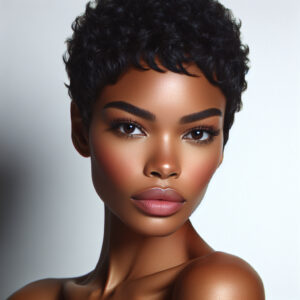
Origin: An intersection of the classic pixie cut and natural afro styling.
Length: Very short, close to the scalp.
Shape and Structure: Rounded and voluminous, with tight curls.
Texture: Coily, with a natural afro texture.
Layers: None, though the top can be slightly longer for volume.
Parting: No parting, the hair is uniformly styled.
Fringe/Bangs: Not typically featured.
Accessories: Minimal, but bold earrings or headbands can complement the look.
Color: Typically natural, though bold colors can enhance the style.
Occasion/Vibe: Chic and modern, great for casual or formal occasions.
Face Framing: Enhances facial structure by highlighting cheekbones and jawlines.
Famous Celebrity: Lupita Nyong’o.
Shoulder Length (waves)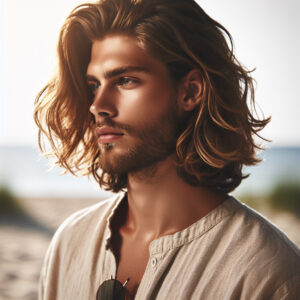
Origin: Popularized by rock stars and surfers, embracing a more laid-back, rebellious image.
Length: Falls around shoulder length.
Shape and Structure: Loose, often wavy or straight.
Texture: Works with straight, wavy, or curly hair.
Layers: Subtle layers can add movement and volume.
Parting: Often parted in the middle or swept to one side.
Fringe/Bangs: Typically no fringe, though front sections may be longer.
Accessories: Headbands or hats can be added for a casual look.
Color: Natural, sometimes with highlights.
Occasion/Vibe: Casual, carefree, and versatile.
Face Framing: Frames the face, creating a relaxed, natural look.
Famous Celebrity: Johnny Depp.
Short Bob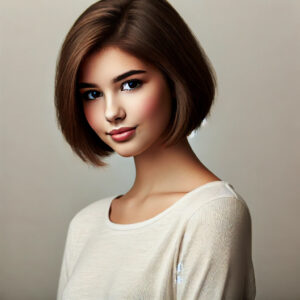
Origin: Popularized in the 1920s during the flapper era, symbolizing modernism and women’s independence.
Length: Short, typically around chin length.
Shape and Structure: Straight and structured, with a blunt cut.
Texture: Works well with straight or slightly wavy hair.
Layers: Usually no layers, though subtle ones may be added for volume.
Parting: Often parted in the middle or slightly to one side.
Fringe/Bangs: Can be paired with blunt bangs for a more dramatic look.
Accessories: Barrettes or headbands for a more polished look.
Color: Often natural, though highlights can add depth.
Occasion/Vibe: Sophisticated, polished, great for both professional and casual settings.
Face Framing: Frames the face, highlighting the jawline.
Famous Celebrity: Anna Wintour.
Shadow Fade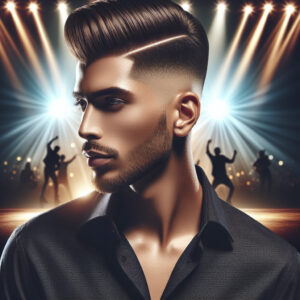
Origin: Evolved from traditional fades, gaining popularity in modern barbering for its subtle blend.
Length: Short, with a gradual fade from the top to the sides.
Shape and Structure: Tightly blended, with a smooth transition from short to shorter hair.
Texture: Works well with all hair textures.
Layers: None, but the fade creates a layered look with the gradual length.
Parting: Often no part, but some add a hard part for emphasis.
Fringe/Bangs: Typically no fringe, keeping the focus on the fade.
Accessories: Minimal, though hair products like pomade can enhance the texture.
Color: Typically natural, but modern versions may include highlights or colored tops.
Occasion/Vibe: Sleek and professional, yet versatile for casual settings.
Face Framing: The fade accentuates the hairline and facial features.
Famous Celebrity: Usher.
Faux Locs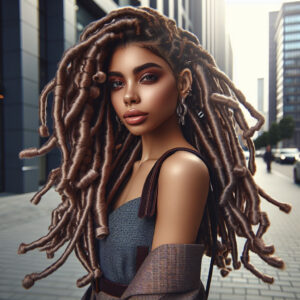
Origin: A protective hairstyle designed to mimic natural dreadlocks but using extensions.
Length: Medium to long, depending on the extensions used.
Shape and Structure: Thick, rope-like locs with a natural, bohemian look.
Texture: Textured, mimicking natural locs with some roughness.
Layers: Layers may be added for dimension and movement.
Parting: Often styled with a middle or side part.
Fringe/Bangs: Typically none, though some may style baby hairs at the edges.
Accessories: Gold cuffs, beads, and wraps are popular adornments.
Color: Often natural, but faux locs can be colored or accented with vibrant hues.
Occasion/Vibe: Boho-chic, casual, great for festivals, or relaxed events.
Face Framing: The locs can be styled away from the face, accentuating facial structure.
Famous Celebrity: Zendaya.
Tapered Afro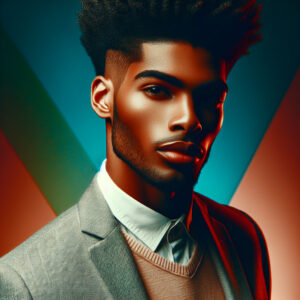
Origin: Popularized during the Black pride movement, evolving into a more modern tapered version.
Length: Short to medium, with a tapered fade along the sides.
Shape and Structure: Rounded on top with a gradual fade down the sides.
Texture: Naturally coily or kinky.
Layers: Typically none, as the natural texture provides volume and dimension.
Parting: No part; the taper creates the shape.
Fringe/Bangs: None, the focus is on the tapered top.
Accessories: Minimal, but bold glasses or headwear can complement the style.
Color: Usually kept natural, though color can be used for a modern twist.
Occasion/Vibe: Clean and sophisticated, perfect for casual or professional settings.
Face Framing: The taper accentuates the forehead and cheekbones.
Famous Celebrity: Donald Glover (Childish Gambino).
Peekaboo Highlights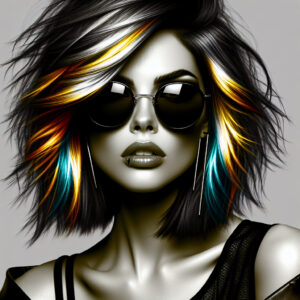
Origin: A modern take on traditional highlights, where hidden sections of hair are dyed.
Length: Works with short to long hair.
Shape and Structure: Hair is typically straight or wavy, with color hidden underneath the top layers.
Texture: Best with straight or wavy hair, but works with curly textures too.
Layers: Layers help reveal the hidden highlights.
Parting: Parted to reveal the colorful highlights underneath.
Fringe/Bangs: Can be paired with side-swept bangs or a fringe for a dramatic effect.
Accessories: Minimal to let the colors shine, though headbands can be used to highlight the layers.
Color: Bright, bold colors like pink, blue, or purple hidden under natural shades.
Occasion/Vibe: Fun, playful, perfect for casual events or expressing individuality.
Face Framing: Highlights under the layers frame the face subtly.
Famous Celebrity: Christina Aguilera.
Drop Fade
Origin: Evolved from traditional fades, gaining popularity for its dramatic drop at the back of the head.
Length: Short to medium.
Shape and Structure: High on the sides, with a noticeable drop towards the nape.
Texture: Works well with all textures, from straight to curly.
Layers: The fade creates a natural layered look as the hair shortens.
Parting: Can include a hard part or no part, depending on preference.
Fringe/Bangs: None, the style is focused on the fade.
Accessories: Minimal, though beard grooming often complements this style.
Color: Natural or with subtle highlights on top.
Occasion/Vibe: Sleek and sharp, perfect for professional or casual environments.
Face Framing: The drop fade emphasizes the jawline and neck.
Famous Celebrity: Odell Beckham Jr.
Chignon Bun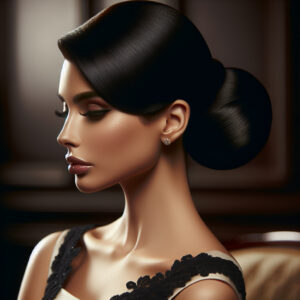
Origin: A classic French hairstyle, dating back to the 19th century.
Length: Medium to long.
Shape and Structure: Hair is twisted into a low, sleek bun at the nape of the neck.
Texture: Smooth, straight, or lightly wavy hair works best.
Layers: Layers can be smoothed into the bun for a clean look.
Parting: Typically a center or side part before gathering the hair into the bun.
Fringe/Bangs: Can be paired with soft, wispy bangs or none at all for a sleeker look.
Accessories: Decorative pins, pearls, or combs can add a formal touch.
Color: Often natural, though subtle highlights can add dimension.
Occasion/Vibe: Elegant, formal, perfect for weddings or evening events.
Face Framing: The sleekness of the bun pulls hair away from the face, emphasizing facial structure.
Famous Celebrity: Meghan Markle.
Curly Fringe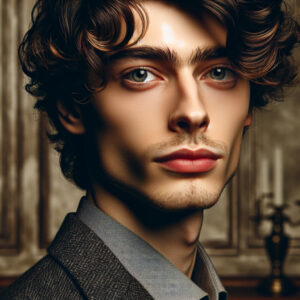
Origin: Popular in modern men’s fashion, especially in contemporary European styles.
Length: Short to medium, with curls left longer at the front.
Shape and Structure: Curly fringe at the front, with shorter sides.
Texture: Works best with naturally curly or wavy hair.
Layers: Layered for volume and movement in the fringe.
Parting: No part, as the curls fall naturally at the front.
Fringe/Bangs: Defined curly fringe is the focal point.
Accessories: Minimal, though a textured product can enhance the curls.
Color: Natural, though highlights can add depth to the curls.
Occasion/Vibe: Trendy and modern, suitable for both casual and semi-formal occasions.
Face Framing: The fringe adds softness and balances out sharper facial features.
Famous Celebrity: Timothée Chalamet.
Flat Twists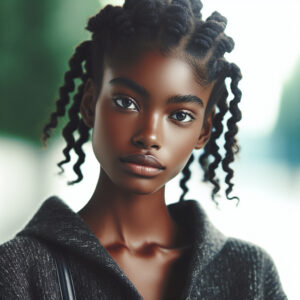
Origin: Rooted in African-American culture as a protective style.
Length: Medium to long.
Shape and Structure: Hair is twisted flat against the scalp in sections.
Texture: Works best with curly or coily textures.
Layers: Typically none, as the twists follow the natural hair pattern.
Parting: Often styled with creative parts, like zigzags or straight lines.
Fringe/Bangs: Not common, though twists can frame the face.
Accessories: Beads, gold cuffs, or colorful threads can be added for decoration.
Color: Natural, but color accents can be added for flair.
Occasion/Vibe: Versatile, great for protective styling, suitable for casual or special events.
Face Framing: Twists pull the hair away, highlighting the face.
Famous Celebrity: Teyonah Parris.
Pompadour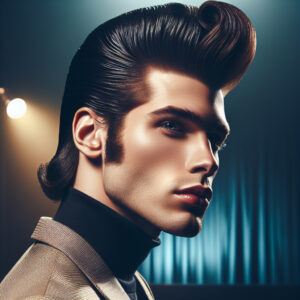
Origin: Originated in the 18th century but was popularized by Elvis Presley in the 1950s.
Length: Short on the sides, with a longer, voluminous top.
Shape and Structure: Hair is styled upward and backward, creating a voluminous front.
Texture: Works best with straight or slightly wavy hair.
Layers: The top can have layers for added volume.
Parting: Often no part, but sometimes paired with a side part.
Fringe/Bangs: The front section is styled upward, creating the pompadour effect.
Accessories: Minimal, though pomade or gel is often used to style.
Color: Typically natural, though modern versions may include bold colors.
Occasion/Vibe: Retro and bold, ideal for formal or semi-casual events.
Face Framing: The height of the pompadour adds length to the face.
Famous Celebrity: Elvis Presley.
Conclusion
Choosing a hairstyle is a deeply personal decision, reflecting not only individual taste but also aspects of identity, culture, and lifestyle. Every hairstyle tells a story—whether it’s rooted in tradition, a statement of fashion, or simply a practical choice for everyday life. From the sleek elegance of a Layered Bob to the bold expression of a Flat Top, the options are as diverse as the people who wear them. Hairstyles can also convey confidence, creativity, or even serve as a tribute to cultural heritage, as seen in styles like Goddess Braids or Cornrows.
What makes the choice of hairstyle so unique is how it can be tailored to complement one’s face shape, hair texture, and personal style. Some may opt for a low-maintenance look, like a Short Afro or Pixie Cut, while others may lean toward more intricate designs like Faux Locs or Peekaboo Highlights. Ultimately, a hairstyle is more than just how hair is styled; it’s a reflection of who you are and how you want to be seen. The beauty of it lies in the fact that there’s no one-size-fits-all—it’s all about individuality and self-expression.
Choosing the right hairstylist is just as important as selecting the hairstyle itself. A great stylist understands your unique needs, hair texture, and personal style, ensuring the perfect cut or look that suits you best. Building a relationship with a skilled stylist who listens and offers expert advice can make all the difference in achieving the hairstyle that truly reflects your individuality.
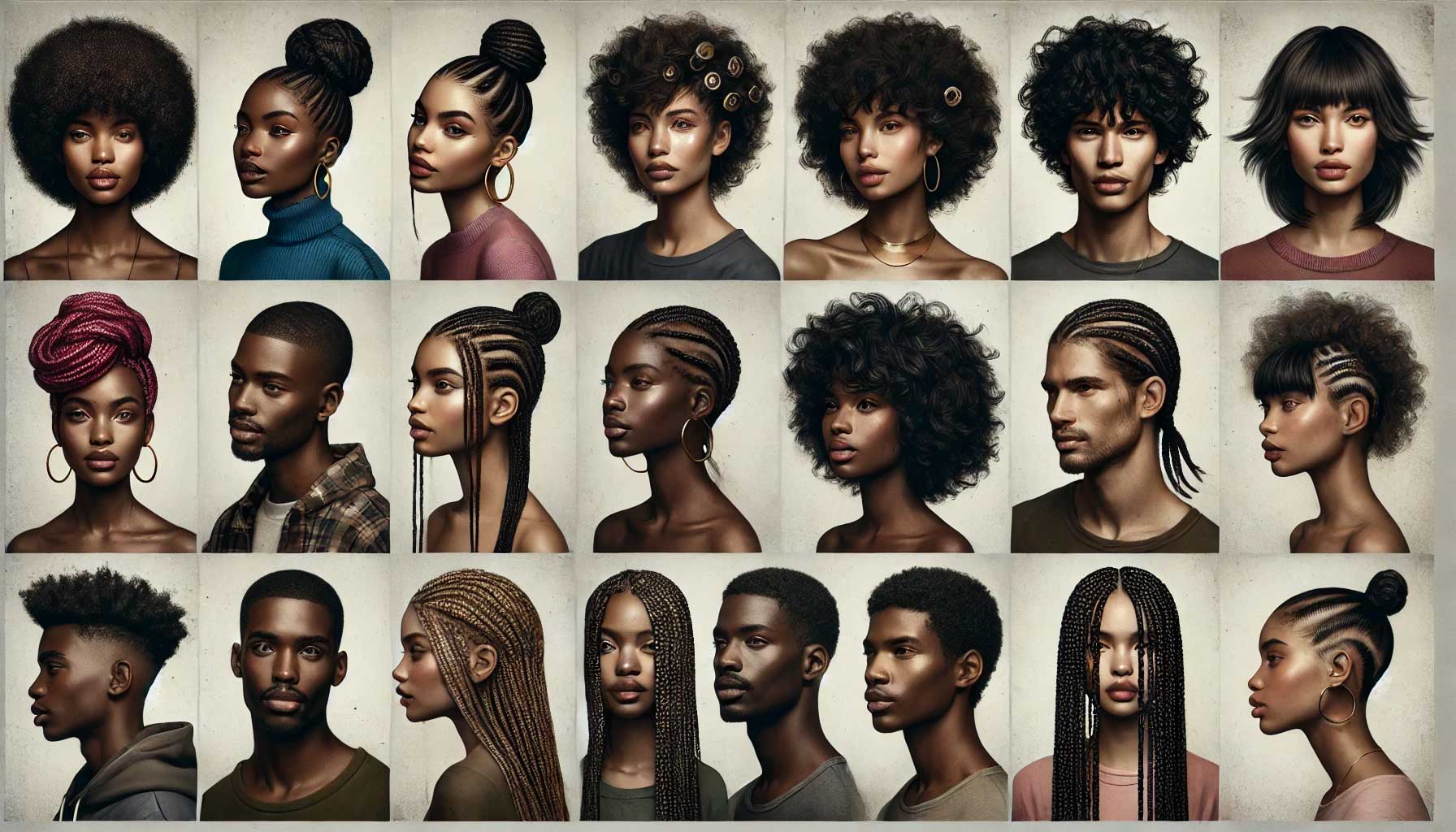
See our Gallery of Hairstyles for more styles
Find Almost Anything Locally

Add a Business
[adverslide]
